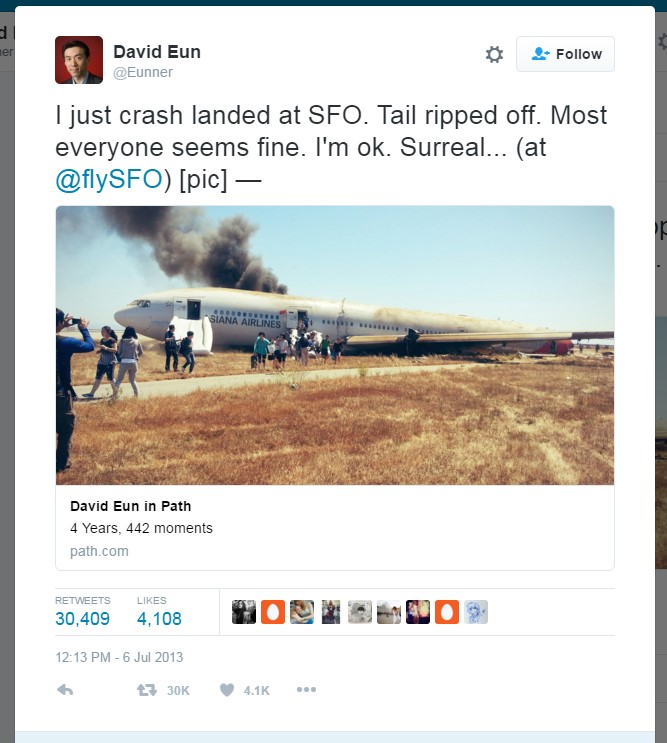
By Matt Thomason, CM, Airport Planner
Airports have long recognized the need for emergency response planning and advanced coordination with emergency services, in addition to being aware of federal notification requirements in the event of an accident. However, in today’s technology-driven world, many airports are not prepared for the widespread media and social media attention that can develop the instant an aircraft accident or other crisis occurs.
Social media is rapidly changing the way people learn about and respond to news stories. Recent reports point to the fact that a majority of those ages 18-29 get their news primarily from social media sources versus traditional broadcast or print media.

The prevalence of social media use is staggering. Currently 73 percent of all internet consumers use some form of social media. There are more than 200 active social media networks with nearly 2.3 billion active users worldwide. Every second, there are more than 1,800 Instagram photos uploaded, 8,500 tweets posted on Twitter, 97,000 YouTube videos watched, 50,000 Facebook likes and 50,000 Google searches. And it’s not going away any time soon. Social media users have risen by 176 million in the last year, with 1 million new active mobile social users added every day. That’s 12 each second!
The nature of social media is such that events once limited to the local newspaper can gain national and even global attention in minutes. Factor in the high quality cameras in every smartphone, and almost anyone is a reporter.
When Asiana Airlines Flight 214 crashed on landing at San Francisco International Airport in July 2013, a photo of the accident was uploaded to Twitter less than one minute after impact. Within 30 minutes, there were more than 44,000 tweets about the crash. One photo of the plane posted by passenger David Eun was retweeted more than 32,000 times.
It is not only the speed of social media that airports must consider, but also the reach of traditional media. Reports show that 90 percent of news editors turn to social media for information within 20 seconds of an incident.
On Sept. 7, three people were killed when two piston-engine aircraft crashed at a small airport in west Georgia. The midair collision occurred just off the end of the runway at 10:54 a.m. Within 20 minutes, tweets regarding the crash were posted on Twitter, and within 40 minutes, the scene was being broadcast on live TV. The story broke nationally on NBC Nightly News.
The opportunity to provide factual information and influence the narrative is reduced immensely once a story breaks. According to the International Air Transport Association, before the development of social media, a realistic target was to issue a first “holding statement” within one hour of notification of an incident. Today, the first comment acknowledging awareness of the incident should be issued within 15 minutes. The court of public opinion can be brutal and is often driven by incorrect information. Through the implementation of a well-defined crisis communication plan, airports increase the likelihood of credible and accurate information being shared.
A crisis communication plan is essentially a roadmap for airport and local officials to follow in the event of an aircraft accident or other crisis. The plan identifies the team of individuals responsible for communication and the nature and type of response, among other things. A social media component details which platforms will be used and the type of response based on what is appropriate for that particular channel.
Developing a crisis communication plan that incorporates social media is one essential strategy that can help airports maintain ongoing operations, minimize damage to their reputation and the leaders involved and enhance relationships with key stakeholders when faced with a crisis.
For more information on airport crisis communication planning and airport management, contact Matt Thomason or any member of GMC’s Airport Planning and Engineering team.